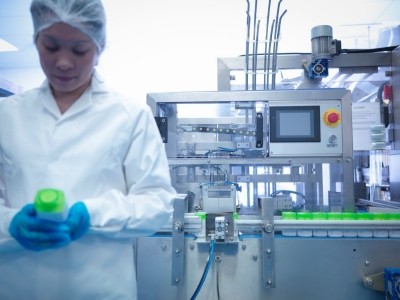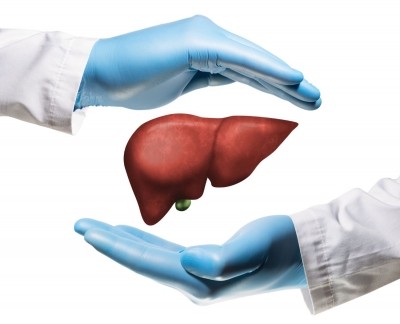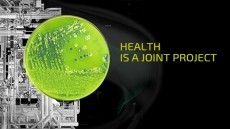How CDMOs can optimize operations and balance costs ahead of the 2032 BioSecure Act

This article features insights from leading experts at CAI, including Alice Redmond, Harry Benson, Jonathan Thompson, and David Shenberger. They discuss strategies for optimizing facilities, balancing costs, and leveraging advanced technologies to navigate the upcoming regulatory landscape.
With the BioSecure Act set to take full effect by January 2032, what immediate steps should domestic CDMOs take to optimize their facilities for the anticipated increase in demand?
CDMOs must implement a risk-based, due diligence approach to optimization. Major market inflection points such as this act are opportunities for CDMOs to begin operational excellence initiatives paired with in-depth market analysis to predict demand growth. The outputs of these analyses should then drive investment decisions around facility improvement, digital transformation, debottlenecking, and potentially new construction or acquisition of available, underutilizing plants in the appropriate geographies.
The BioSecure Act is a forthcoming regulatory framework set to take full effect by January 2032. It aims to enhance the security and resilience of the pharmaceutical supply chain within the United States. The Act mandates stringent compliance requirements for domestic manufacturing, including rigorous risk assessments, enhanced data security protocols, and expanded supplier networks. Its primary goal is to mitigate risks associated with global supply chain disruptions, ensure the availability of critical medications, and promote investment in advanced manufacturing technologies and infrastructure upgrades.
How can CDMOs effectively balance the need for upgrading their infrastructure with the financial constraints that might arise from increased manufacturing costs?
Well-researched cost-benefit analyses are key to this balancing act. Leadership will need to clearly define to their stakeholders their approach to maximizing growth during this time of change while maintaining quality and meeting current manufacturing commitments. Developing a strategic plan is essential to gain the over-the-horizon perspective necessary for negotiating these constraints.
What are some best practices for ensuring that facility expansions or modifications comply with both current regulations and the upcoming requirements of the BioSecure Act?
The law is prompting an industry-wide review of supply chains, data security, and partnering agreements. While the law is still being discussed, pharmaceutical manufacturers must take a wide range of actions, including gap assessments, expansion of supplier networks, and evaluation of alternative equipment, APIs, and excipients.
Given your experience, what are the most common challenges CDMOs face when shifting from offshore to domestic manufacturing, and how can they overcome these hurdles?
This act provides a unique moment in time to expand a CDMO's supplier base across the US, focusing on previously untapped and underserved communities, adding previously unleveraged 2nd and 3rd-level companies to provide network redundancy in the same way other industries have historically done. In addition, it provides a chance for countries with defined strategies and investment portfolios to compete for business that previously was unavailable to them, again providing significant international supply chain resilience. The challenges of managing and tracking these new supplier networks to verify compliance with the implementation of the new law will then grow as the market responds to supply and demand globally.
The importance of strategic partners in crafting a sustainable supply chain management program can’t be overstated. The processes, procedures, and oversight of a robust and redundant supplier network can be expensive if they are not crafted thoughtfully and managed professionally. Experienced and focused staff and partners are key to implementing this successfully. In addition, there must be an understanding of the value of this process throughout the organization. Business continuity often is hard to calculate an ROI for until you actually are in a crisis – staying proactive is key.
Can you provide insights on how CDMOs can streamline their supply chain processes to mitigate delays and disruptions that may be exacerbated by the new regulations?
Technologies such as blockchain for supply chain transparency and advanced data analytics for demand forecasting will help CDMOs build a more resilient and adaptable supply chain.
How important is it for CDMOs to invest in advanced technologies, such as automation and digitalization, in preparation for the BioSecure Act, and what specific technologies should they prioritize?
CDMOs are already relying heavily on automated manufacturing, process analytical technologies, and consumables within the reshoring process. CDMOs should continue to focus on automation technologies, digital QMS, blockchain, advanced data analytics, AI and machine learning, IoT for real-time process monitoring, and robotics. These technologies enhance operational capabilities, ensure compliance, and build a resilient business model, helping CDMOs adapt to the changing regulatory landscape and maintain competitive advantages
What strategies can CDMOs employ to attract and retain skilled labor necessary for operating and managing upgraded facilities?
In order to attract, and retain talent at a CDMO, they should encourage employees to:
- Gain valuable experience across a wide range of product types, processes, equipment.
- Chart their career path by advancing their expertise within any of a variety of disciplines.
- Establish close teams with common operational goals.
- Emphasize the employee is a part of something bigger: helping to reduce drug shortages, fulfilling critical therapies for patients.
- Prove that your organization is one that drives continuous improvement, contributing your own ideas and passion for excellence.
How can CDMOs manage the expected increase in operational costs without significantly impacting their pricing and competitiveness in the market?
Regarding the current competitive landscape, I expect to see the market split as larger international CDMOs move rapidly to gain scale and take the newly available market share. Over time, this should allow for small, nimble manufacturers with well-defined, local supply chains to enter the market and produce niche products at competitive prices as well.
It is clear costs will not be reduced because of this act. Significant investment in new equipment, strategic research partners, and key suppliers will be required to maintain operational excellence.
In your experience, what role do robust quality assurance and regulatory compliance play in optimizing facility operations, and how can CDMOs enhance these aspects?
Implementing digital quality management systems (QMS) and real-time monitoring tools helps to ensure compliance with stringent regulatory standards, essential for maintaining market access and securing new partnerships
What advice would you give to CDMOs about maintaining operational excellence during the transition period leading up to the 2032 deadline?
Supply chain versatility and redundancy have been shown to be critical to reliable operations. The constraints of the act bring these issues even more to the forefront. Domestic CDMOs must evaluate alternate suppliers, sourcing strategies, and rethink operations as part of the efforts to both minimize the impact of the Act as well as leverage an unforeseen opportunity to wring inefficiencies out of their operational workstreams.
























